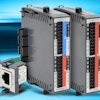This article originally appeared in the September print issue of Food Manufacturing.
During the past year, the bakery sector has been active in addressing key topics that have popped up in recent times.
And one of the most important involves the sanitary design of equipment.
The old saying within the bakery sector that everything goes through a kill zone — the oven — is no longer a valid argument in addressing the issue of sanitary design. Equipment manufacturers and bakers have a vested interest on improving the old standard as bakery has always lagged behind other food sectors in addressing sanitary design.
The previous standard, which was the Baking Industry Sanitation Standard Committee (BISSC), had not been changed or updated for many years. Thankfully, bakers and equipment manufacturers have come together for a meeting of the minds. That has resulted in the ANSI Z50.2 Standard which is a giant leap from the BISSC.
Many bakers did not respect the old BISSC standard as valid, and discounted its importance outside of a certificate on the wall. Simply put, bakers realized BISSC had worn out its welcome, and also saw the writing on the wall with new FDA standards and legislation being put forth.
Some, though, question if the standard has gone far enough. Keep in mind the new ANSI Standard, although it addresses making equipment more accessible and open for cleaning and inspection, is targeted for mostly dry cleaning such as airhose blow off, vacuuming and wipe down.
Many of the larger bakery groups take a further step by specifying the AMI (Meat) and 3A (Dairy) Standards for equipment. This is in part due to their Internal Risk Management programs. More cleanable and accessible equipment is more likely to be cleaned properly and at a reduced labor time. This is especially true for equipment that meets wash-down standards. This equipment also tends to be more robust in build to handle the rigors of wash-down and the use of detergents and sanitizers.
The debate of wash-down vs. dry clean is ongoing, but many bakeries have already made the move to a wash-down standard.
Many smaller bakers — and some larger ones — claim with lower bakery margins they cannot afford the cost of more hygienic equipment. The old adage ”goes through a kill zone” is not enough. What about the raw frozen dough manufacturer, and lines where they may produce both a product with allergens and without, or products/equipment conditions after the oven? How do you balance what is the best you can do for the consumer, from a sanitary standpoint, to the low returns on profit? These are valid points in addressing if the ANSI Standard has gone far enough.
One issue that still needs to be addressed is policing of the ANSI Standard which, at this time, relies on self-inspection and not a separate auditing body.
Another involves used equipment, which is prevalent in the baking industry. Although it can be said that used equipment may not meet the ANSI Standard, the purchase of used, sub-standard sanitary designed equipment is still rampant within the industry. There seems to be a conflict between self-auditing and the practice of purchasing used sub-standard equipment.
The good news is the ANSI Standard is a giant leap from the BISSC and is an evolving standard with a commitment to being updated and amended over time.
The next big issue likely on the table is producing or achieving a healthier product.
In the past few years, bakery has been on the defensive to low-fat, low-sugar and low-carb. Past attempts to address these issues have met with limited success, with taste being a main drawback.
Consumers are also becoming more adept at reading labels. Some of the ingredients to replace sugars and fats don’t fare as well in terms of taste and readability.
One of the attempts to address healthier products consists of a compromise rather than an ingredient change. More manufacturers are changing to portion control or single-serve sizes. This is prevalent in the sweet goods side of bakery such as cookies and snack cakes.
On the bread side of the business, you now see more whole grain variations and organics as an alternative to white bread. Also, the consumption of flatbreads (pita, wraps, tortillas, ethnic breads) is on the rise and is a steady growth segment within bakery. These breads are seen as healthier by the consumer and do not sacrifice taste.
An offshoot to healthier products is the hot topic of gluten-free. More people are being diagnosed with Celiac Disease (getting sick from gluten, prevalent in bakery from wheat) or being gluten intolerant.
Most large bakeries have not attempted to address this issue, as a separate facility, free of wheat flour, is required to produce gluten-free. Larger bakers do not see a return, in terms of value, to produce gluten-free at this time based on total sales.
The gluten-free effort has been picked up by smaller niche bakers, in dedicated bakeries, using ancient grains which have no gluten. By using these grains, taste and handling become an issue. Bakers are still working to achieve a better-tasting product and are improving in terms of formulation.
Sweet gluten-free products are the easiest bakery segment to correct, by masking off flavors with sugar, eggs and other ingredients. Bread will be a tougher segment to achieve a better-tasting product.
Good tasting or not, the product is still needed. That is evident as demand for gluten-free products is growing. Once a family member has been diagnosed with Celiac or as gluten intolerant, the family generally tends to stick to gluten-free products within the household instead of purchasing both gluten-free and standard bakery products. One interesting point is that the largest segment of people consuming gluten-free do not have Celiac or are not gluten-intolerant. They are people who deem the product as healthier even though it is priced higher than regular baked goods.
These are just some of the challenges the bakery sector is looking to address.






















